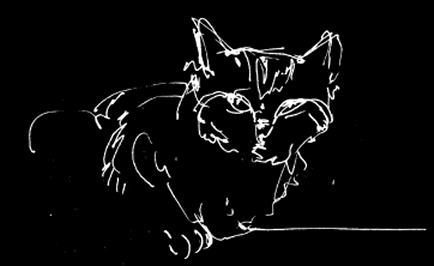
Chronic leukaemias, in which those affected may live with symptoms for years. In chronic lymphocytic leukaemia (CLL) there is an increase in the number of a type of white blood cells called lymphocytes. In chronic myeloid leukaemia (CML) there is overproduction of another type of white blood cell called myeloids or granulocytes. These cells are abnormal, so are not able to carry out the normal functions of white blood cells, such as fighting infection. They also live too long, so over a period of time they replace the fully-functioning cells (white, red and platelets) in the bone marrow. This is a slow process and tends to get worse over time.
Chronic leukaemias begin slowly with a gradual feeling of tiredness. The spleen (an organ in the upper left abdomen that is part of the immune system) grows until it becomes massive, causing a dragging weight and pain in the upper left side of the abdomen.
Other symptoms may include:
- gradual loss of weight;
- aching in the bones;
- nosebleeds;
- unwanted and prolonged erections (priapism) in men;
- fever, heavy sweating and night sweats;
- swollen lymph glands especially in the neck, groin and armpits;
- bruising easily;
- lack of energy; and
- breathlessness.
· Anaemia
· Red blood cells carry oxygen around the body. Anaemia is a condition where the blood is unable to carry enough oxygen due to a low number of red blood cells, or because each red blood cell is unable to carry as much oxygen as normal. Common symptoms of anaemia include feeling tired, faint, or breathless.
· There are several different types of anaemia, and each one has a different cause. One of the most common causes is iron deficiency. Other causes can include pregnancy, heavy periods, poor iron absorption caused by certain intestinal (gut) diseases, bleeding from the intestines, and a lack of certain vitamins, such as folic acid and vitamin B12.
Basic dietary guidelines for an iron rich diet and iron supplementation
The do’s
1. Eat more iron rich foods. The very best sources of iron that is easily absorbed by the human body are:
- Meat (especially organ meats like liver and kidneys)
- Fish
- Eggs (especially the yolk)
- Cheese
- Commercial breakfast cereals are fortified with easily absorbable iron so they can also make a good contribution.
2. Vitamin C improves iron absorption. Have a glass of fresh orange juice with your breakfast which could contain egg, the breakfast cereals, or a bit of fried liver.
3. You also need folic acid to assist in preventing anaemia. Folic acid is mainly found in green leafy vegetables, and you can also obtain a supplement if necessary.
4. Iron supplementation may help a lot. Iron sulphate tablets such as ferrous sulphate, taken in a dose of 300mg three times a day, are recommended. A dose of 300mg once or twice a day may be effective for prophylaxis of mild iron deficiency. The tablets should be taken between meals as iron is absorbed better on an empty stomach. However, this form of iron has side effects such as bloating, fullness and sometimes stomach pain and taking the tablets with meals may help to alleviate these side effects. Ferrous gluconate or ferrous lactate may have fewer side effects.
The don’ts:
1. Don’t go on a vegetarian diet without consulting your doctor and dietician.
2. Avoid iron-containing cocktails of vitamins since these generally do not contain enough iron and are expensive.
3. Drugs that reduce acid production by the stomach such as Cimetidine (Tagamet) may inhibit iron absorption and these tablets should not be taken simultaneously.
4. There are no quick fixes. It is necessary to continue iron therapy for four to six months to correct the anaemia and replenish stores.

1 comment:
Great blogpost mineral manufacturers in India
Post a Comment